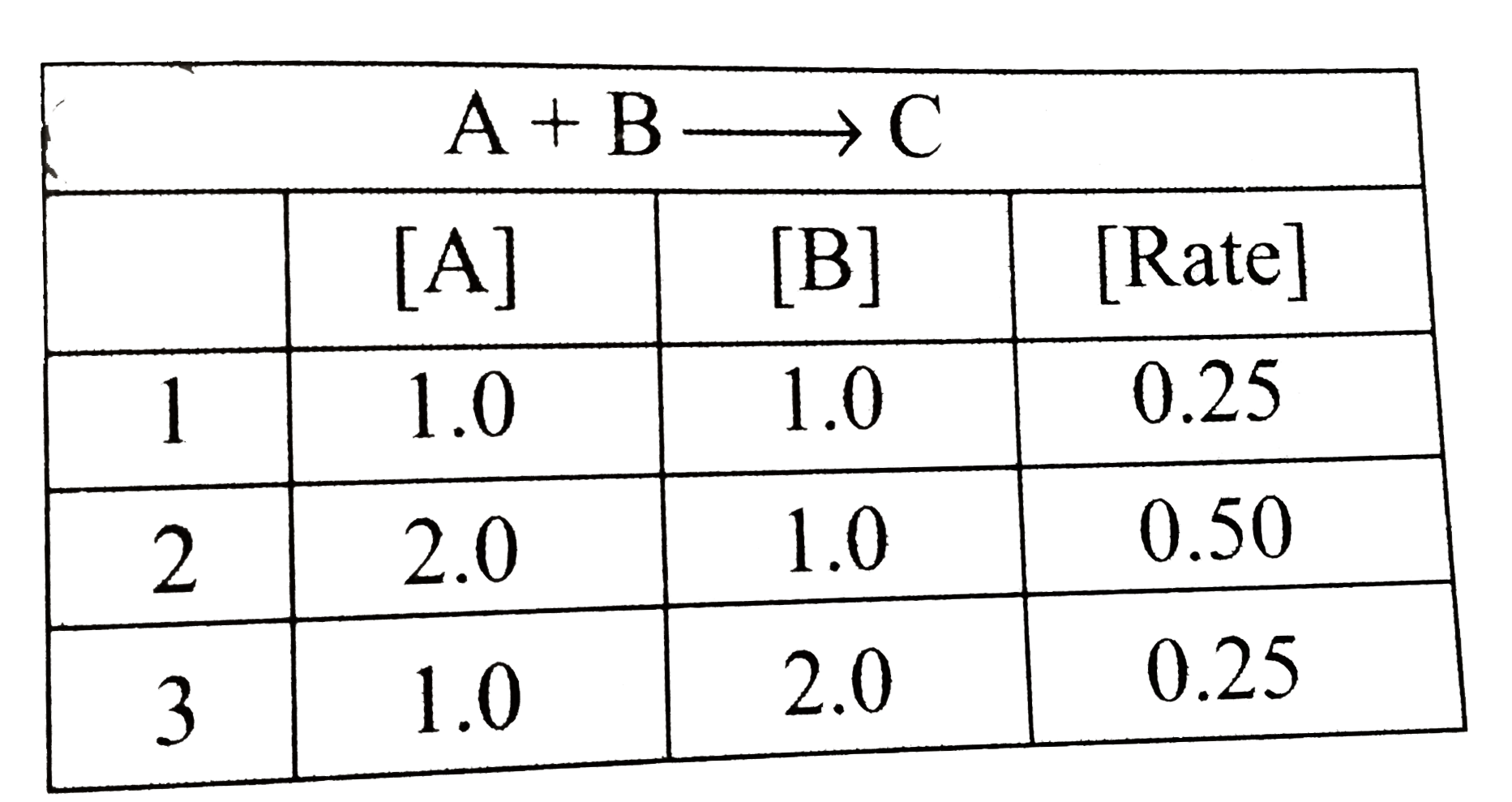For a chemical reaction 2X+Y→Z, the rate of appearance of Z is 0.05molL−1−1min. The rate of diappearance of X will be
0.05molL−1hr−1
0.05molL−1−1min
0.1molL−1−1min
0.25molL−1−1min
The correct Answer is:C
To solve the problem, we need to relate the rate of appearance of product Z to the rate of disappearance of reactant X using stoichiometry. The given reaction is:
2X+Y→Z
1. Identify the Stoichiometric Coefficients:
In the reaction, the stoichiometric coefficients are:
- For X: 2
- For Y: 1
- For Z: 1
2. Write the Rate Expressions:
The rate of a reaction can be expressed in terms of the change in concentration of the reactants and products. For the reaction:
Rate of disappearance of X=−12d(X)dt
Rate of disappearance of Y=−11d(Y)dt
Rate of appearance of Z=d(Z)dt
3. Relate the Rates:
From the stoichiometry of the reaction, we can relate the rates:
−12d(X)dt=d(Z)dt
This means that for every 1 mole of Z produced, 2 moles of X are consumed.
4. Substitute the Given Rate:
We are given that the rate of appearance of Z is:
d(Z)dt=0.05mol L−1min−1
Now substituting this value into the rate expression:
−12d(X)dt=0.05
5. Solve for the Rate of Disappearance of X:
To find d(X)dt, we rearrange the equation:
d(X)dt=−2×0.05
d(X)dt=−0.1mol L−1min−1
6. Interpret the Result:
The negative sign indicates that X is disappearing. Therefore, the rate of disappearance of X is:
d(X)dt=0.1mol L−1min−1
Final Answer:
The rate of disappearance of X is 0.1mol L−1min−1.
---
In the reaction, the stoichiometric coefficients are:
- For X: 2
- For Y: 1
- For Z: 1
The rate of a reaction can be expressed in terms of the change in concentration of the reactants and products. For the reaction:
Rate of disappearance of X=−12d(X)dt
Rate of disappearance of Y=−11d(Y)dt
Rate of appearance of Z=d(Z)dt
From the stoichiometry of the reaction, we can relate the rates:
−12d(X)dt=d(Z)dt
This means that for every 1 mole of Z produced, 2 moles of X are consumed.
We are given that the rate of appearance of Z is:
d(Z)dt=0.05mol L−1min−1
Now substituting this value into the rate expression:
−12d(X)dt=0.05
To find d(X)dt, we rearrange the equation:
d(X)dt=−2×0.05
d(X)dt=−0.1mol L−1min−1
The negative sign indicates that X is disappearing. Therefore, the rate of disappearance of X is:
d(X)dt=0.1mol L−1min−1
The rate of disappearance of X is 0.1mol L−1min−1.
Topper's Solved these Questions
- BOOK - CENGAGE CHEMISTRYCHAPTER - CHEMICAL KINETICSEXERCISE - Exercises Assertion-Reasoning22videos
CHEMICAL KINETICS
- BOOK - CENGAGE CHEMISTRYCHAPTER - CHEMICAL KINETICSEXERCISE - Exercises Integer15videos
CHEMICAL KINETICS
- BOOK - CENGAGE CHEMISTRYCHAPTER - CHEMICAL KINETICSEXERCISE - Exercises Multiple Correct34videos
CHEMICAL KINETICS
- BOOK - CENGAGE CHEMISTRYCHAPTER - CARBOXYLIC ACIDS AND THEIR DERIVATIVESEXERCISE - Exercises Archives (Analytical And Descriptive)34videos
CARBOXYLIC ACIDS AND THEIR DERIVATIVES
- BOOK - CENGAGE CHEMISTRYCHAPTER - COORDINATION COMPOUNDSEXERCISE - Archives Subjective18videos
COORDINATION COMPOUNDS
Similar Questions
Knowledge Check
- Question 1 - Select One
For a chemical reaction 2X+Y→Z, the rate of appearance of Z is 0.05 mol L−1. The rate of disappearance of X will be
A0.05 mol L−1−1minB0.05 mol L−1h−1C0.1 mol L−1−1minD0.25 mol L−1−1min - Question 2 - Select One
For the reaction
H2(g)+I2(g)→2HI(g), the rate of disappearance of HI will be 1.0×10−4molL−1s−1. The rate of appearance of HI will beA1.0×10−4molL−1s−1B2.0×10−4molL−1s−1C0.50×10−4molL−1s−1D4.0×10−4molL−1s−1 - Question 3 - Select One
In the reaction 2NO2+O2→2NO2, if the rate of disappearance of O2 is 16gm.min 1, then the rate of appearance of NO2 is
A90gm.M∈−1B46gm.min−1C28gm.min−1D32gm.min−1
For a reaction , 2A+D→3C, the rate of appearance of C at time t is 1.2×10−4mol L−1s−1 . Find the rate of reaction.
View SolutionFor a chemical reaction A→B, it was found that concentration of B is increased by 0.2molL−1 in 30 min. The average rate of the reaction is ____________×10−1molL−1h−1. (in nearest integer)
View SolutionFor the reaction 2X+Y→ 2Z the rate of disappearance of X si 0.08 M/s (a) What is the rate of formation of Z (b) What is the rate of the reaction
View SolutionThe rate constant of a reaction is 2.1×10−2mol−2litre3−1min. The order of reaction is
View Solution
Rate is expressed in molL−1−1min.
In the above reaction, the order isView Solution

